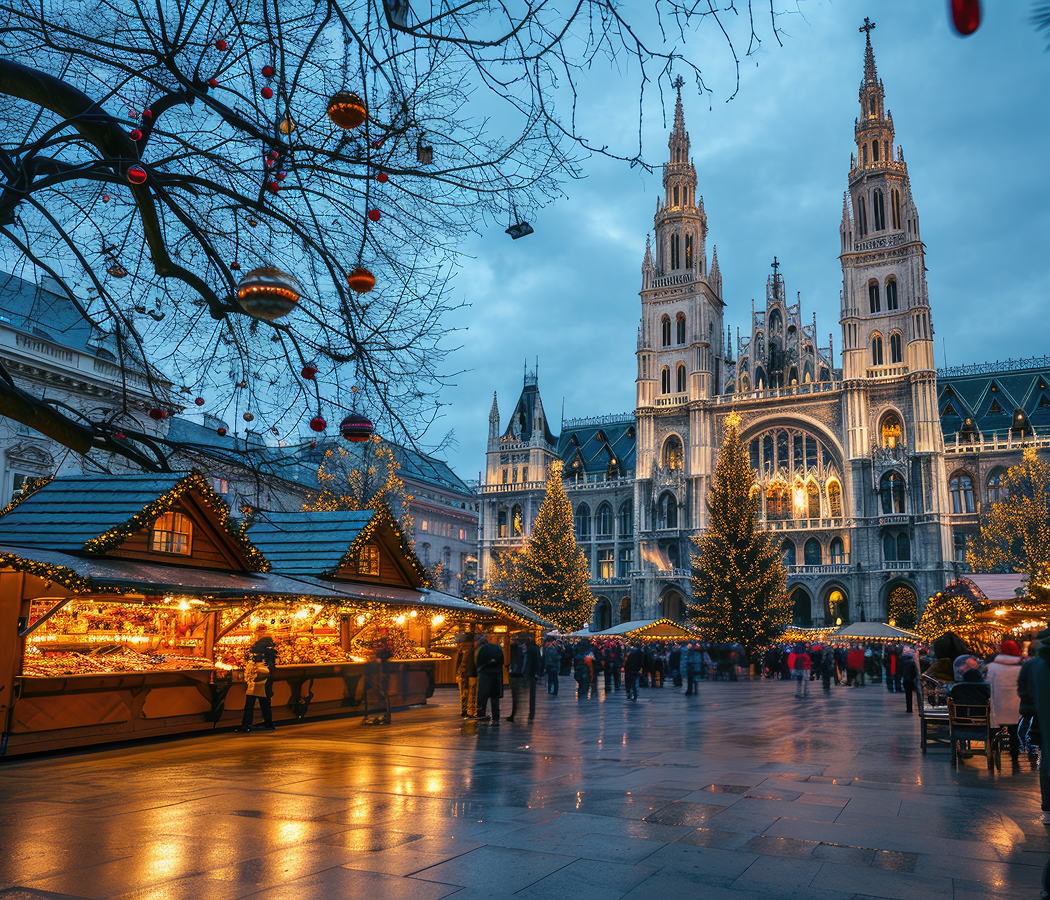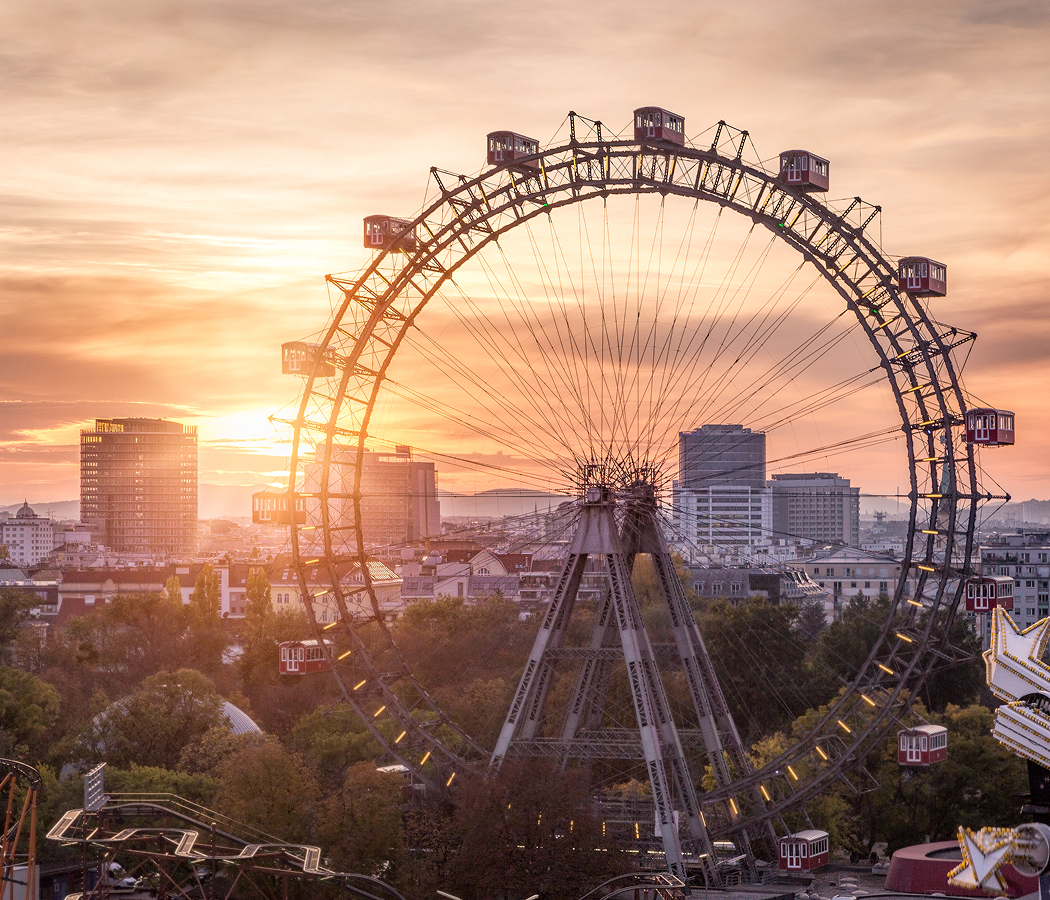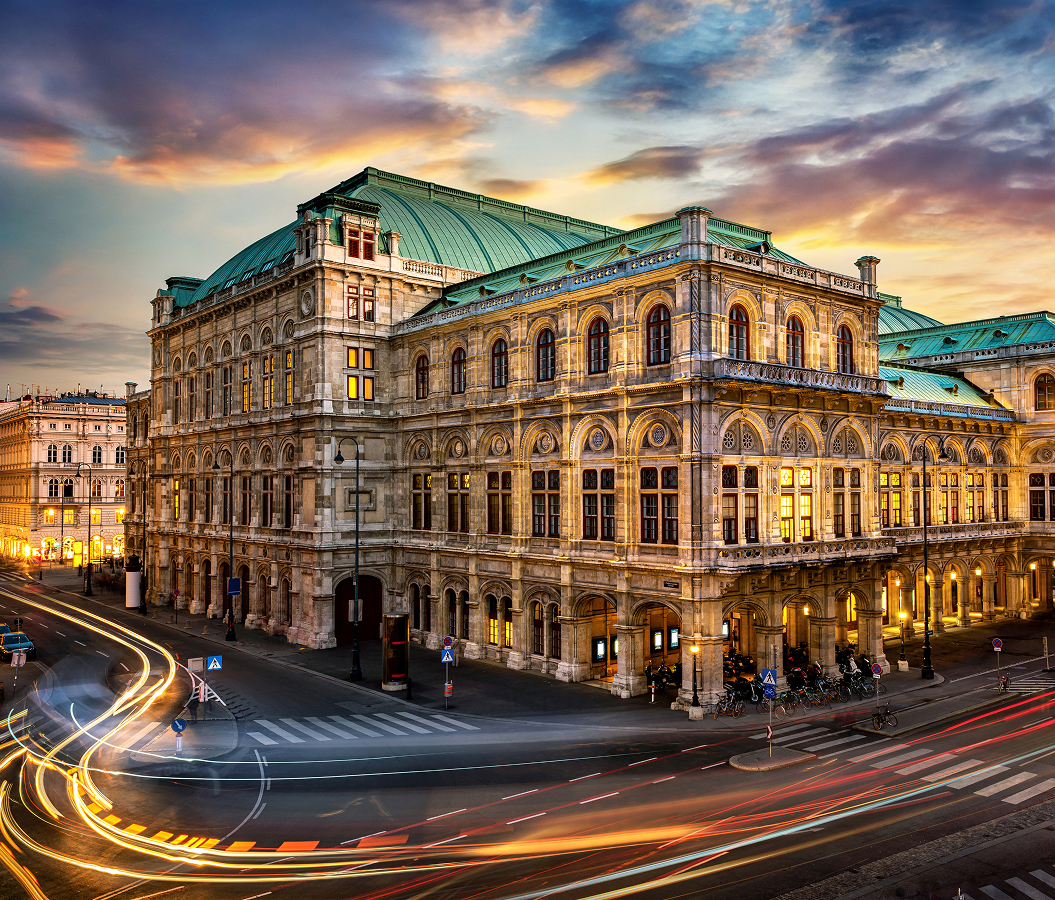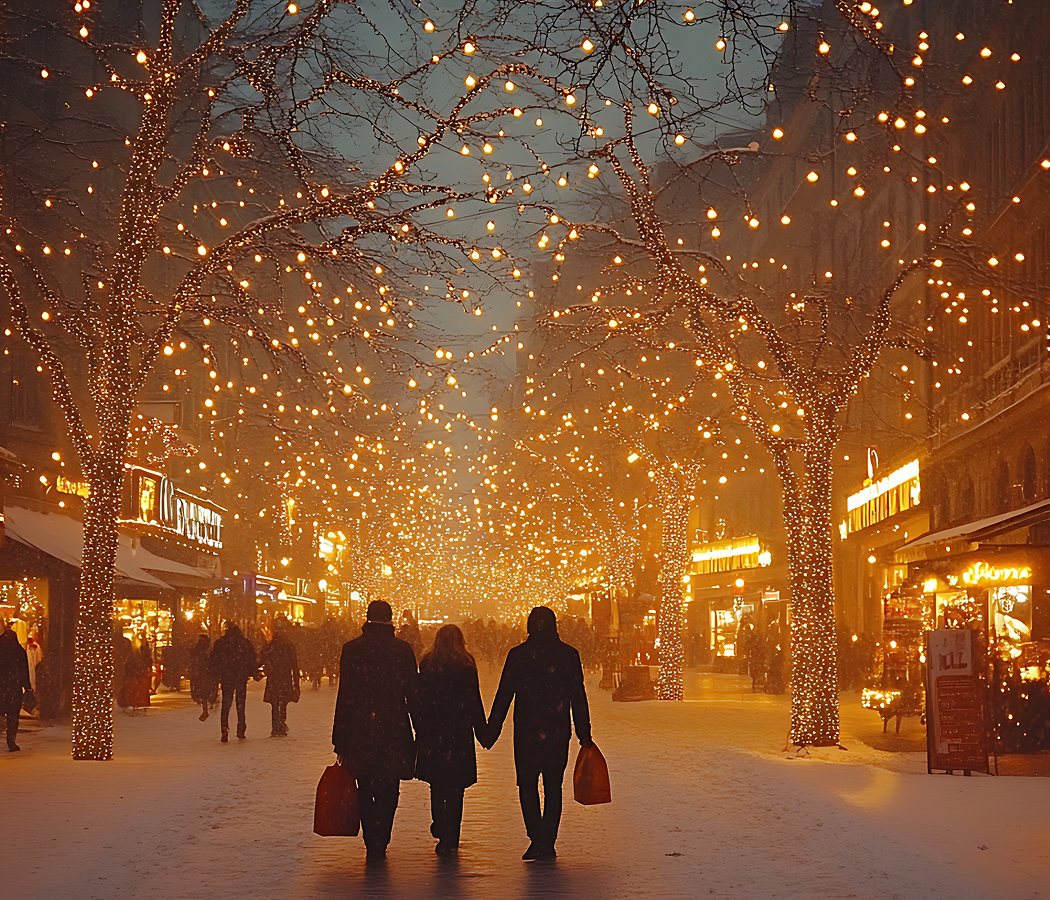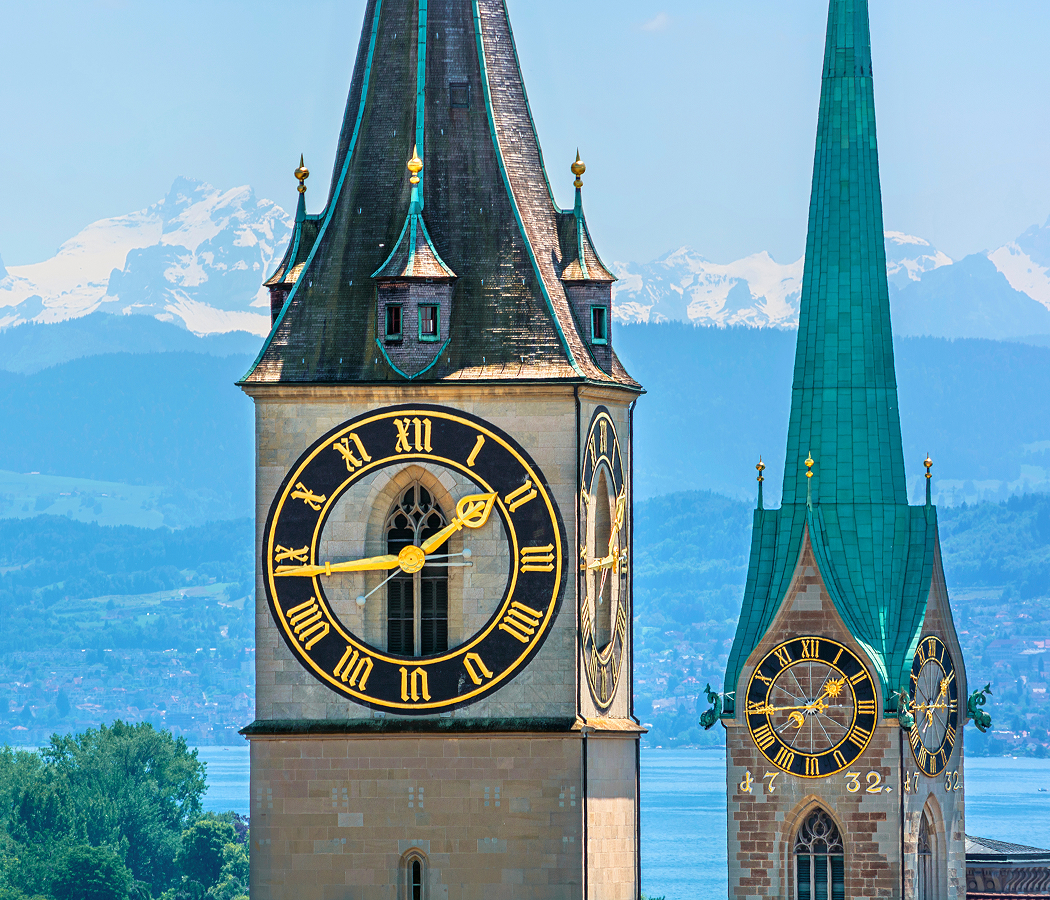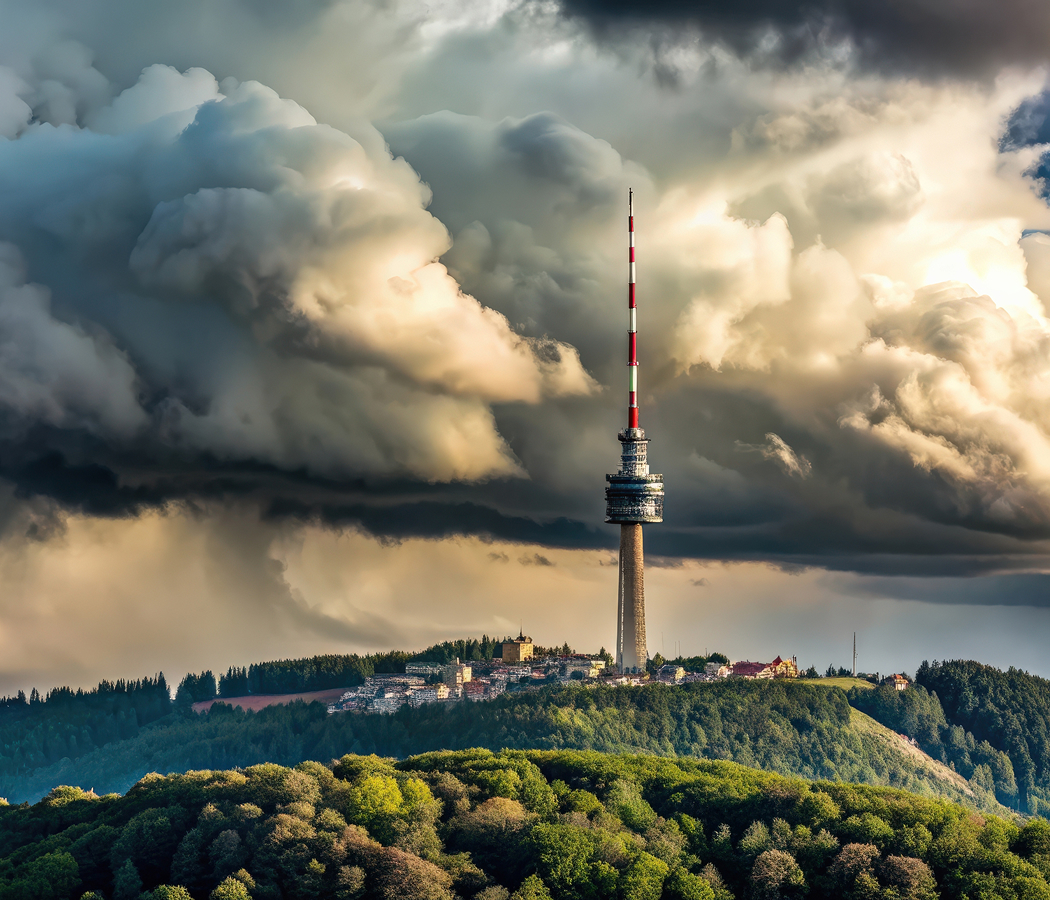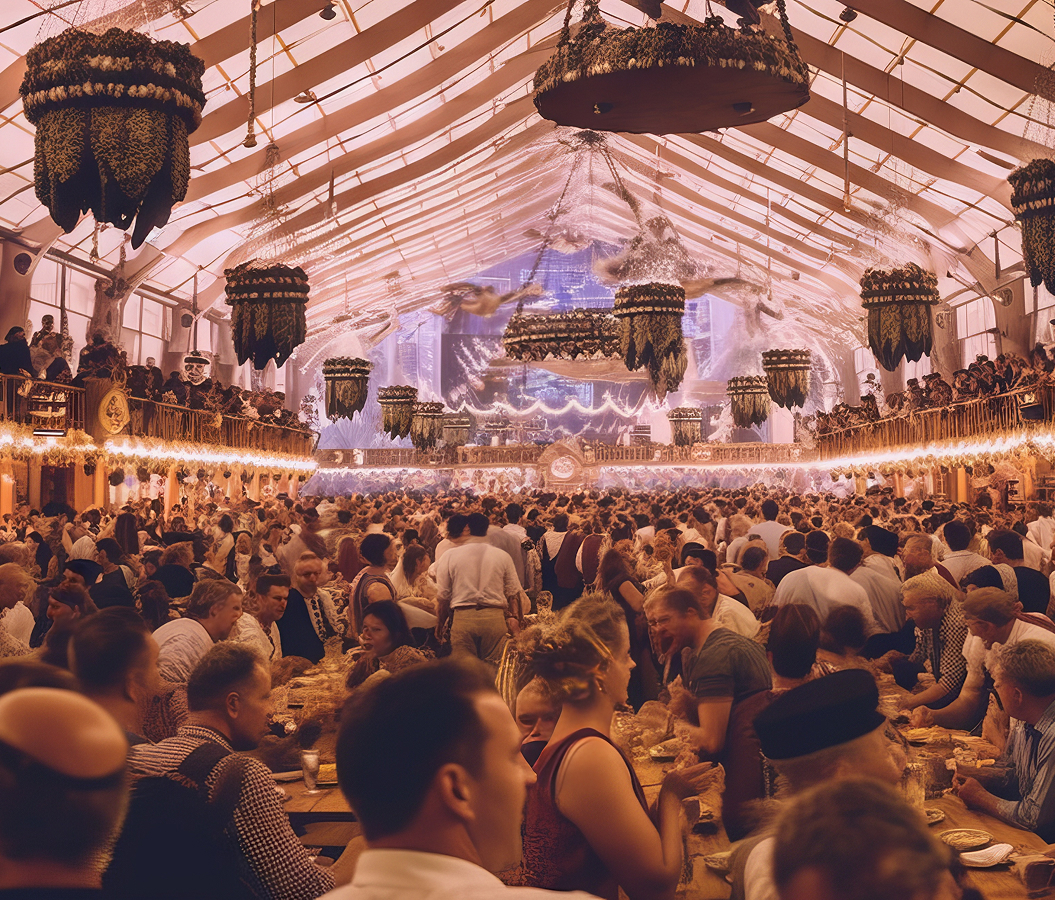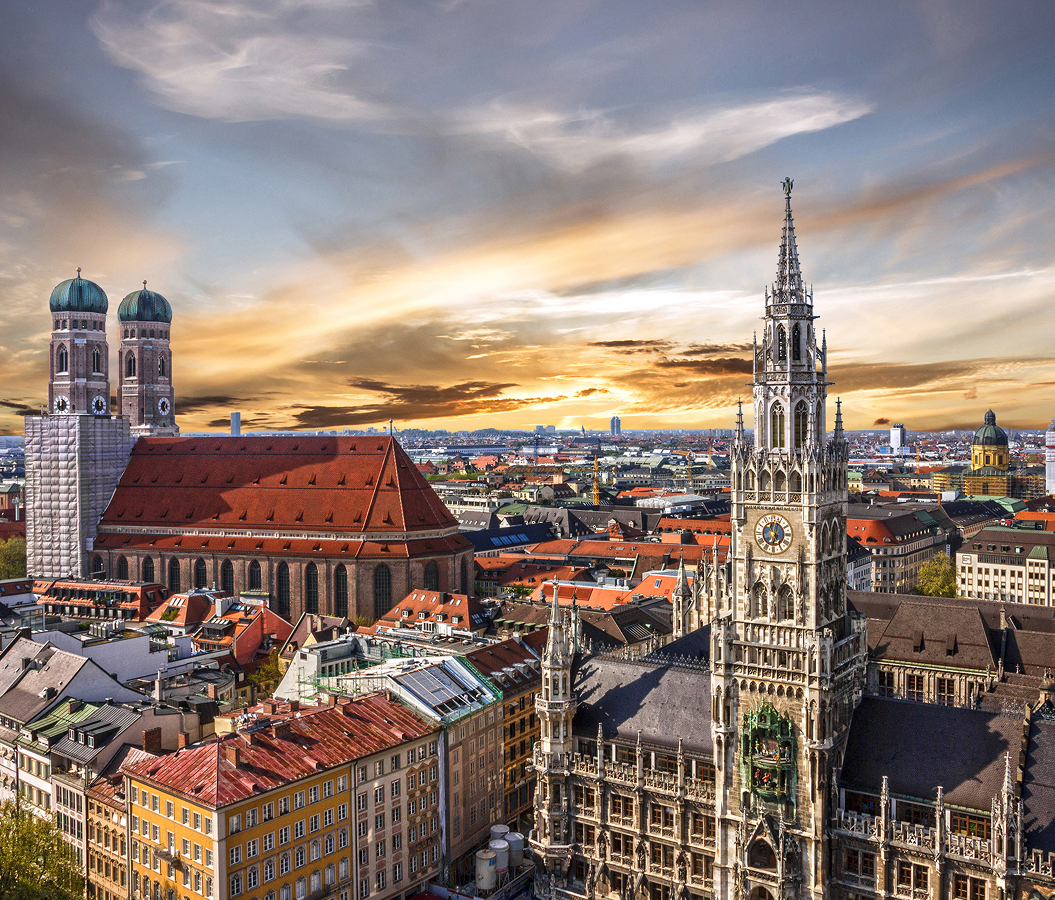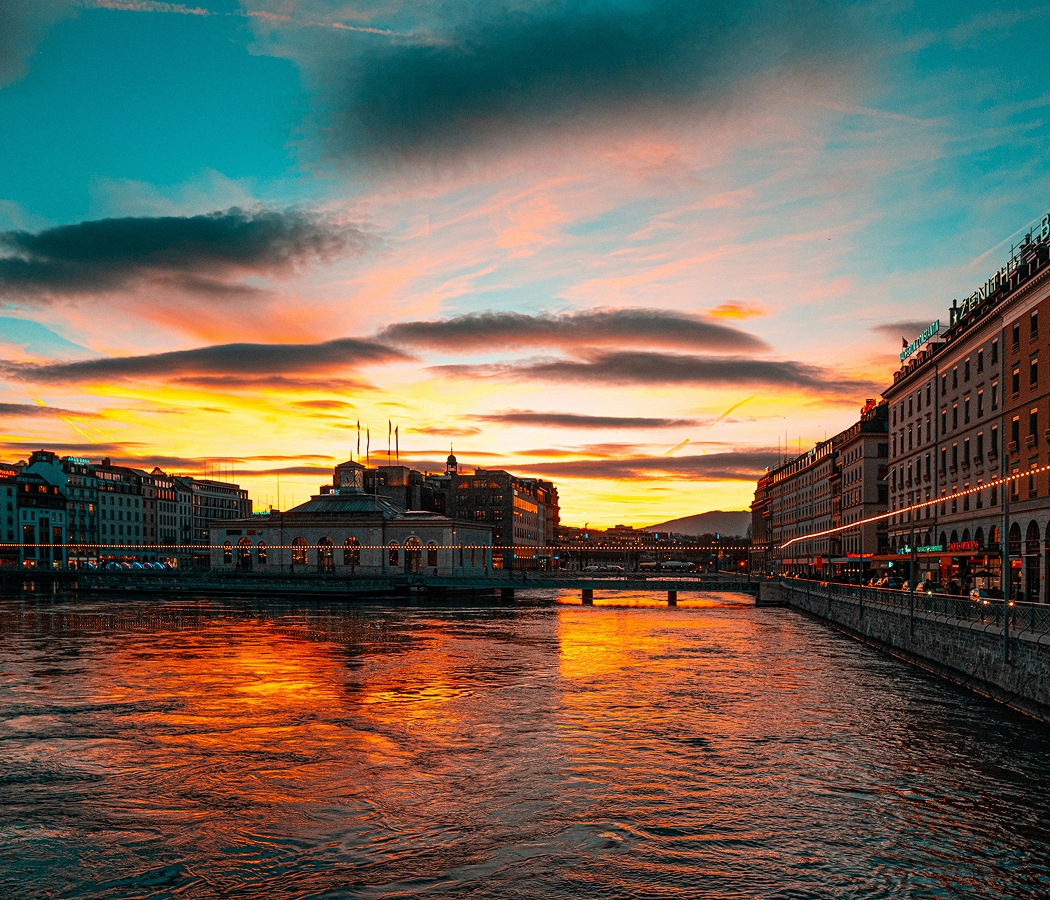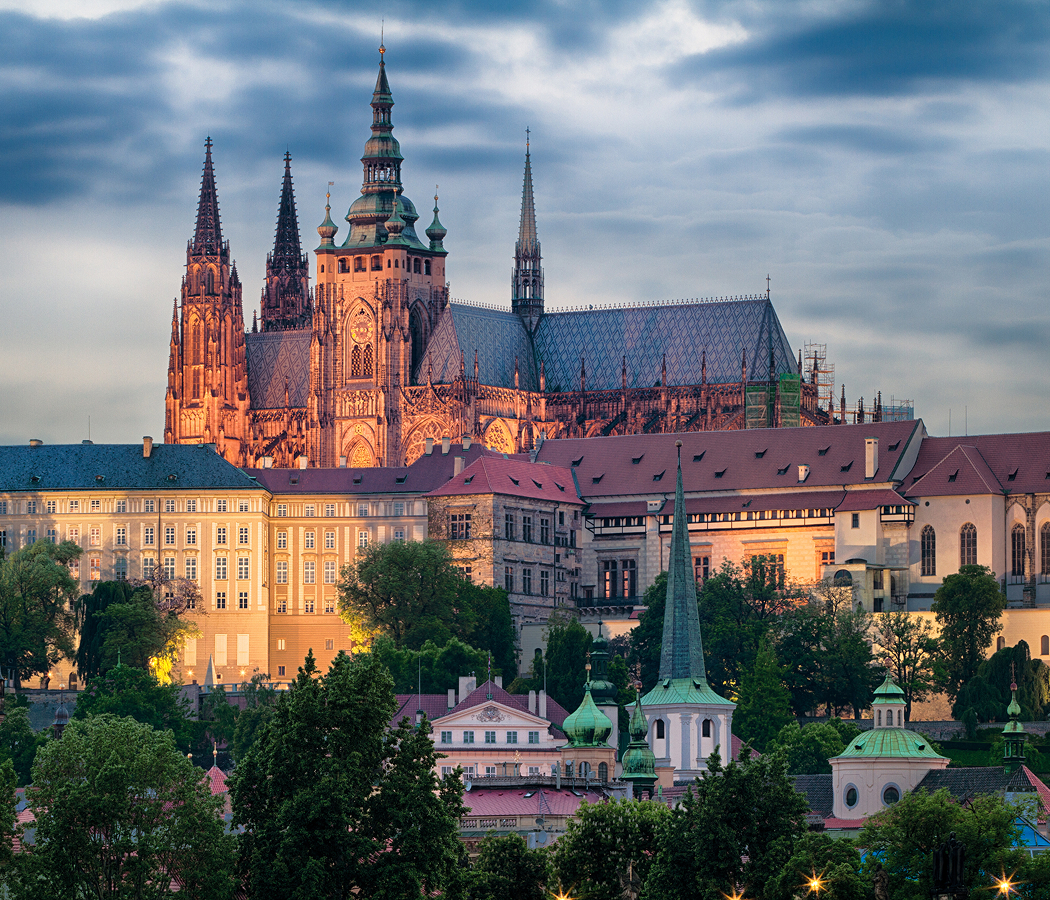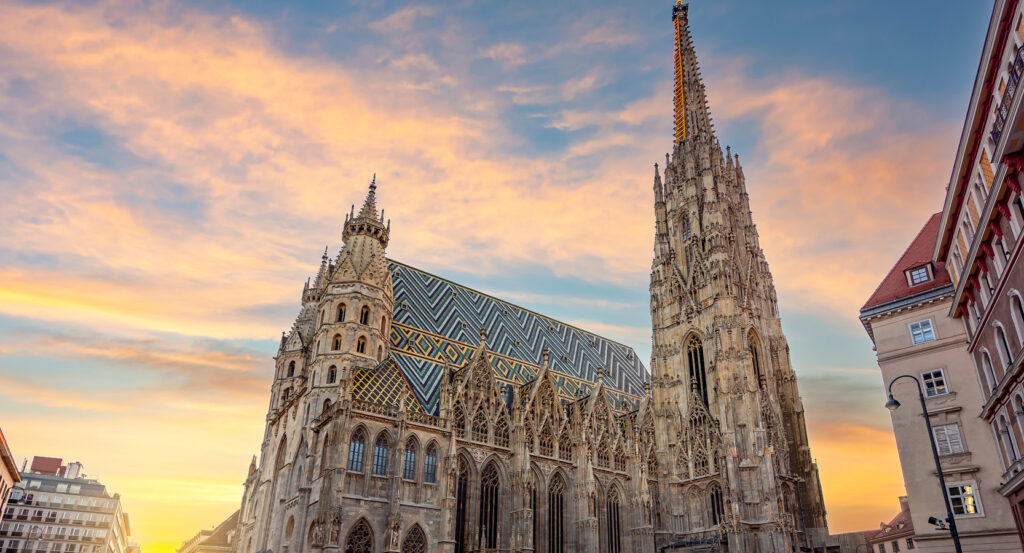
Why you should experience St. Stephen’s Cathedral in Vienna.
St. Stephen’s Cathedral in Vienna isn’t merely a church, it’s the heartbeat of the city, an architectural hymn that rises from the cobblestones of Stephansplatz into the heavens.
For centuries, its Gothic spire has guided travelers home, its bells tolling across Vienna’s rooftops like echoes of eternity. Known locally as Stephansdom, this cathedral is more than a monument to faith, it’s a living symbol of resilience, artistry, and the soul of Austria itself. Step inside, and the cool hush wraps around you like velvet. Sunlight filters through jewel-toned stained glass, casting patterns across pillars carved with saints and angels. The scent of candle wax mingles with centuries of incense, and every sound, a whisper, a footstep, a prayer, seems to rise upward, absorbed into the stone. From the outside, the cathedral dazzles just as deeply: its multicolored tiled roof glimmers in geometric mosaics of green, gold, blue, and black, each tile meticulously restored after World War II. The 136-meter south tower, affectionately called Steffl, dominates the skyline, visible from nearly every corner of the city. As you stand beneath its spire, gazing up, you feel Vienna’s dual nature, both grand and intimate, unfold before you. This is where emperors were crowned, where Mozart’s funeral mass was held, and where the passage of time itself seems to pause in reverence. Every arch, gargoyle, and chapel tells a story, of devotion, of endurance, and of beauty that refuses to bow to history’s storms.
What you didn’t know about St. Stephen’s Cathedral.
Behind its serene grandeur, St. Stephen’s Cathedral carries tales of survival, innovation, and quiet rebellion.
Originally constructed in 1137 as a modest Romanesque church, it grew over centuries into the Gothic masterpiece we see today. Its foundation stones are older than the city’s opera house, older even than Habsburg rule. The cathedral’s roof alone is a marvel, 230,000 glazed tiles forming a dazzling mosaic of the double-headed eagle, symbol of the Habsburg dynasty, alongside the coats of arms of Vienna and Austria. During the final days of World War II, flames engulfed the city, and only a chain of human effort saved the cathedral from complete destruction. Legend says that a single roof beam caught fire from nearby embers, and volunteers risked their lives to extinguish it, an act that preserved Vienna’s soul. Deep beneath the cathedral lies another world: catacombs that hold the remains of bishops, nobles, and plague victims from the 18th century. Here, among flickering lamps and limestone tunnels, you can sense the fragility of life that contrasts so powerfully with the cathedral’s soaring heights. Even the Pummerin, the massive north tower bell cast from melted Turkish cannons after the 1683 Siege of Vienna, carries a message of transformation, turning instruments of war into a voice for peace. And though it towers with authority, St. Stephen’s also hums with subtle rebellion: its north tower remains unfinished, a silent reminder that perfection was never the goal, only devotion. For many Viennese, it’s not just a cathedral; it’s a compass, a companion, and a keeper of the city’s collective memory.
How to fold St. Stephen’s Cathedral into your trip.
Experiencing St. Stephen’s Cathedral is like walking through the very heart of Vienna’s story, best done with patience, wonder, and a readiness to be still.
Start in the early morning, when Stephansplatz is quiet and the first sunlight gilds the spire. Step into the nave, where shadows and light dance across centuries-old stone, and let yourself listen, not just to the choir or the organ, but to the silence that holds them both. If you climb the 343 spiral steps to the top of the south tower, the city unfolds beneath you like a living painting, the Danube glinting in the distance, the Hofburg Palace shimmering in cream and gold, and the gentle hum of trams below. The view reminds you why Vienna has always been a city of both art and order, faith and freedom. After descending, explore the catacombs on a guided tour to witness the cathedral’s more somber history, a world of stone chambers where time feels suspended. Step back into daylight and walk the perimeter, admiring the roof tiles that sparkle like dragon scales against the sky. Around the square, cafés and street performers bring the atmosphere to life; it’s easy to imagine Mozart or Beethoven passing through these same cobblestones. Stop for a coffee and a slice of Sachertorte at a nearby café, letting the bells of Steffl mark the hour. If you return at dusk, you’ll find the cathedral illuminated in amber light, its silhouette reflected in rain-slicked stone. That’s when Vienna feels most itself, a city of music and faith, of grandeur softened by grace. St. Stephen’s Cathedral isn’t just a landmark to visit; it’s a living cathedral of memory, still breathing, still listening, still calling people home.
Hear it from the Foresyte community.
Climbed the tower steps, legs dead, but that view over the city? Unreal. Totally worth going through a medieval gym sesh to see Vienna shine from up top.
Where meaningful travel begins.
Start your journey with Foresyte, where the planning is part of the magic.
Discover the experiences that matter most.

